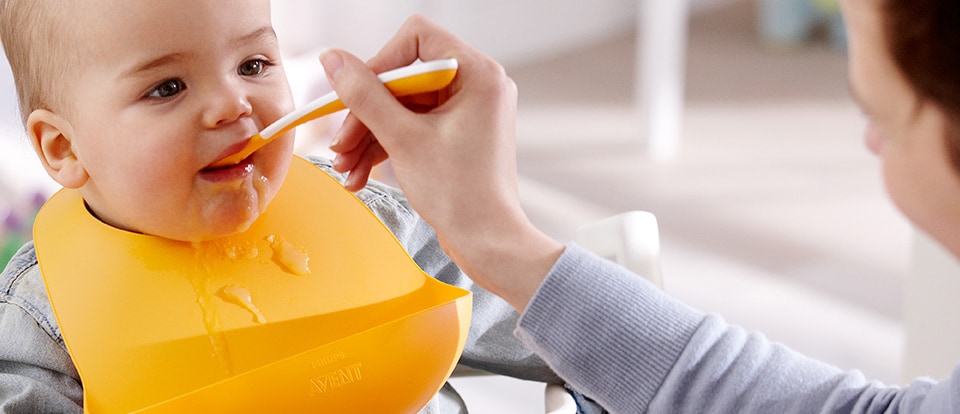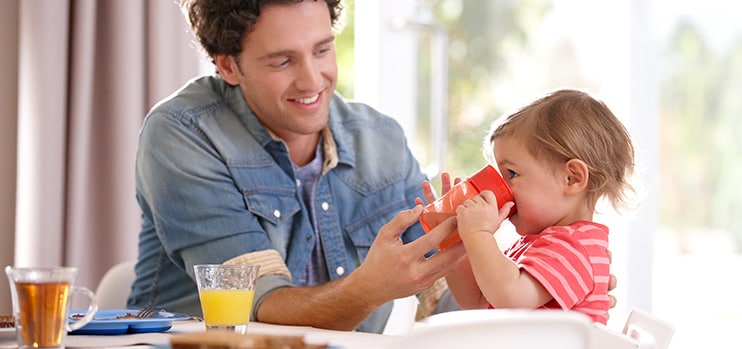

Weaning is all about learning and babies only accept and start to enjoy new tastes and textures if they get to try them.

Adapted from Clinical Paediatric Dietetics 3rd ed. 2007
When your little one is confident eating solid food, a variety of foods from four food groups should be included every day, so they get the full range of nutrients. Ideally these nutritious foods should be ones the rest of the family eat too:
The four food groups are:
Any of the following foods can be introduced as the first weaning food, but most mothers begin with cereal, root vegetables or fruit, mixed with their baby’s milk.
All fruits
All cereals such as rice, oats, wheat and corn based
Lean meat, poultry or fish – well cooked
Eggs – well cooked
Dhal, lentils, hummus, chick peas and other pulses
Nuts – ground or as nut butter, e.g. ground almonds and smooth peanut butter
Plain fromage frais and yoghurts
Grated cheese melted onto warm foods.
Begin with a runny purée for the first few tastes. Then move on to thicker purées or well-mashed food as your baby becomes used to taking food from a spoon.
Skills to learn:
You can include all the foods above, and in addition:
Liver – limit to one small serving per week because of high levels of vitamin A.
Mashed food with soft lumps and soft finger foods. Meat may still need to be puréed but can be mashed if it is very soft.
Skills to learn:
Soft fruit pieces, e.g. mango, melon, banana, soft, ripe pear, peach, papaya and kiwi
Cooked vegetable sticks, e.g. carrot sticks, green beans, courgette sticks, potato and sweet potato
Cooked vegetable pieces, e.g. cauliflower and broccoli florets
Cooked pasta pieces
Crusts of bread or toast
Cheese cubes
Roasted soft vegetable sticks, e.g. potato, sweet potato, parsnip, pepper, carrot, courgette.
Sips of water from a cup at meal times – meals should end with a milk feed or milk pudding
Well-diluted fruit juices from a cup, which aid iron absorption from vegetarian foods.
You can include all the foods above, and family foods that have been prepared without salt or sugar.
Minced and chopped foods, finger foods (such as raw fruit and vegetable sticks) and a variety of family foods, such as sandwiches or toast.
Skills to learn:
From the age of one year most toddlers can eat family foods, aiming for a balanced diet. This may include foods that are not recommended in infancy:
Honey
Foods preserved with salt, such as bacon and tinned foods with added salt
Unpasteurised soft cheeses
Foods with added sugar – they should be offered only at meal times to avoid dental decay.
You can introduce full-fat cows’ milk into your toddler’s diet at one year. Semi-skimmed milk should not be introduced until your little one is two years old.
Please be aware that the information given in these [articles] is only intended as general advice and should in no way be taken as a substitute for professional medical advice. If you or your family or your child is suffering from symptoms or conditions which are severe or persistent or you need specific medical advice, please seek professional medical assistance. Philips Avent cannot be held responsible for any damages that result from the use of the information provided on this website.